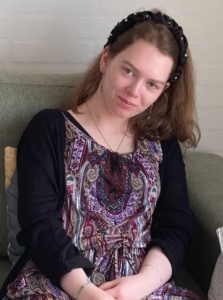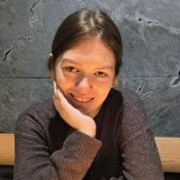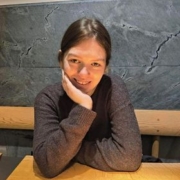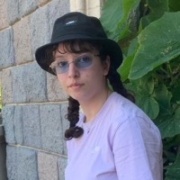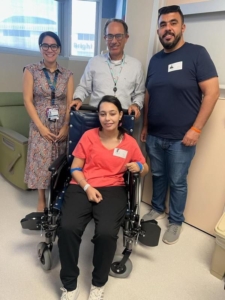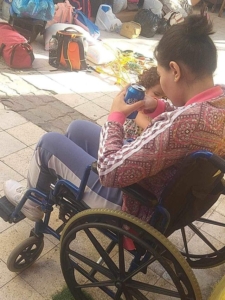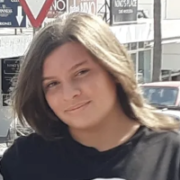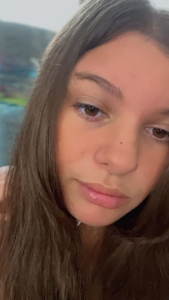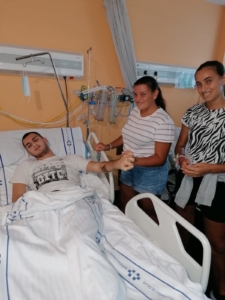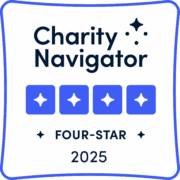Emine (Emi) Malaj, Leicester, United Kingdom
Written by Fatos Malaj, Emine’s father

Emi was just 10 years old in 2018 when she had her first seizure. It happened on a school trip with her school friends and teachers. Getting the call from the teacher that something had happened was shocking, as Emi was a healthy child and we never saw symptoms of anything. This phone call still haunts me to this day as it is not a call you ever want to take.
The doctors said it could be a one-off tonic-clonic seizure so we just had to monitor her at home. In 2019 at the age of 11, (8 months later) she had her second tonic-clonic seizure while swimming at the public pools. Another scary event, as she was in the water and could have drowned, but thankfully I was there to save her.
At this stage, her behavior was still fine until she started taking medication, Levetiracetam, commonly known as Keppra, to manage her epilepsy. Unfortunately, a common side effect of Keppra is Keppra rage, so she was always angry and aggressive with everyone and hardly spoke nicely to anyone. Her attitude completely changed. She was not positive about anything and it was challenging to manage this behaviour. The behaviour I hear, that is so common from other families. However, the Keppra helps with the seizures.
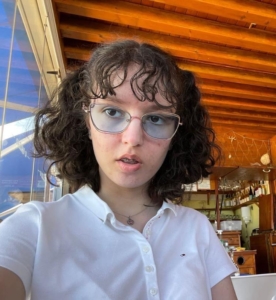
Over time, the symptoms got worse, along with deterioration, which is not common with epilepsy or a side effect of the medication. Emi’s walking got weaker and her memory became a lot worse. She had to think a lot longer before she could say anything. Her thought process had become slow. She was having myoclonic seizures which caused her hands to shake every so often even when doing simple things. Slowly she has lost parts of her life and as a family, it is hard to see this every day.
Emi’s mother Lily became her full-time carer but the family also helps. She has around 1-2 hospitalisations per month, so it takes a toll on Emi and the whole family. Every hospitalisation is extremely worrying as the seizures can be fatal, so they need to be attended to quickly to avoid the unimaginable.
Since 2022, Emi has been homeschooled as there isn’t assistance available to keep her in mainstream school and a parent cannot accompany her. This has impacted Emi’s mental health as she misses school and her friends very much and they are not able to find a way to help her get back into school even casually.
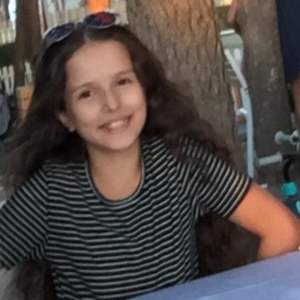
As a young person, it is hard to see them miss out on so much. She would love to drive and talks about it all the time but now cannot have the opportunity to try, however she keeps on asking when she can and it is very upsetting.
I miss when she would finish school and come into my car for pick up. She would be excited to tell me about her day and was always positive about these things no matter what. She loved life! Now looking back I didn’t realise how important these small little things were. I will miss her bright smiles and wonderful laugh that brought so much joy to the house. But now it’s like a memory that will stick by my side forever and I will never forget it. Grieving the way she was is a massive part for us and yet she is still alive for us to watch her deteriorate and suffer more. How can this be a reality?
I received the diagnosis from her doctor when he called me in to give me the news. When I got there, he told us the name of the disease; Lafora disease with the EMP2A gene and that he would need to do further research as it is very rare and he didn’t have much information. He did however give us the basics and this was a real turning point for all of us in your life.
Lafora disease is a terminal neurological degenerative disease characterized by progressive myoclonus epilepsy, tonic-clonic seizures, cognitive decline, childhood dementia, ataxia and years of suffering.
Everything I had in my head for the future of my children was completely stripped from my mind. It was a moment I couldn’t believe and I didn’t want to see anyone. I just wanted to be left alone to process it all. Me and my family live two different lives right now. One in front of Emi and the other is the reality with everyone else. I found it hard to say in front of my wife the bad news of the diagnosis, as she is more fragile than me. She held Emi for 9 months and brought her into this world with the best care and love she could give.
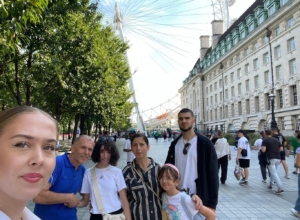
Emi has noticed a difference in us, one time when I took her to Paris and we took many photos together, she saw them and said “Daddy you look so empty in these photos”. She caught me and realised how I was feeling even though I was trying to hide it. Everyone has accepted everything and knows this is our reality. We don’t think much about ourselves. We only think about what is best for Emi. Our moods and mindset depend on her wellness for the day because if she is not joyful and smiling, then neither are we.
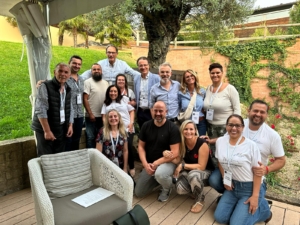
In 2023, I went to Bologna, Italy for the Lafora Science Symposium and it was the best decision of my life. I met with the community who understood exactly what we are going through and how to manage this disease. I got to meet other parents like me and they understood me better than anyone else had. Most importantly, I met parents who lost their children and yet they still stood by my side and supported me. I met doctors who were very helpful and happy to guide us and told me not to lose hope. This past September 2024, I had the same opportunity to attend the Lafora Science Symposium in San Diego, USA and I had the same experience. I became closer with the families and community and have learnt ways on how to slow progression down and give Emi and good quality of life to keep her happy.
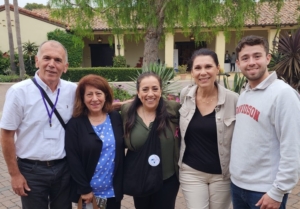
It is very hard to express our feelings. I have seen things that are not easy to let go of or pass through your mind, but we manage our days bit by bit. We are not able to go out and have the normal “family day out” and do fun activities. We feel completely isolated from this and have accepted it as our reality, but I think we just pretend things are okay, so that we can get through the days.
I am excited that the Safety Study has been approved and I am hoping to apply so Emi has the chance to be one of the 10 patients that will have the opportunity to trial the ASO therapy. It is a long journey from the UK to get to Dallas, Texas, USA but that does not concern me. My main priority is to slow down the progression and stop death in my child.
Today, I sit here with the hope now to change the pathway for my daughter and many others.
Please help us fund this safety study as we have to raise funds to travel, accommodation and to continue the safety study for all the 10 patients.
If you have any money to spare, even if it is the cost of a coffee, please donate to Chelsea’s Hope so they can keep going with helping our children.
Many Thanks,
Fatos Malaj
October 2024
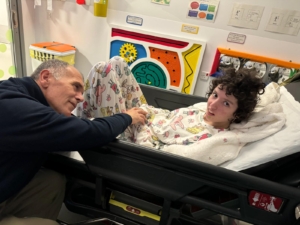
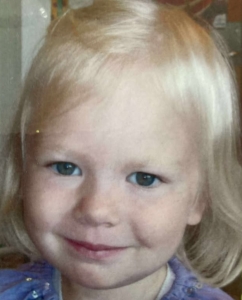 A Happy Childhood
A Happy Childhood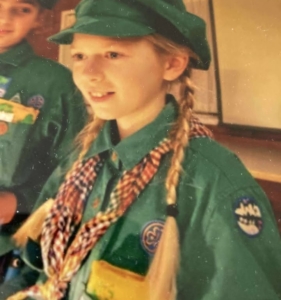 Almost a year later, while participating in the Scouts program she loved, Mathilde had another episode where she was also uncontactable for over an hour. This time, she experienced muscle jerks in her right arm. She had another EEG, which showed epileptic activity around the same time as the results of the first one appeared.
Almost a year later, while participating in the Scouts program she loved, Mathilde had another episode where she was also uncontactable for over an hour. This time, she experienced muscle jerks in her right arm. She had another EEG, which showed epileptic activity around the same time as the results of the first one appeared.
